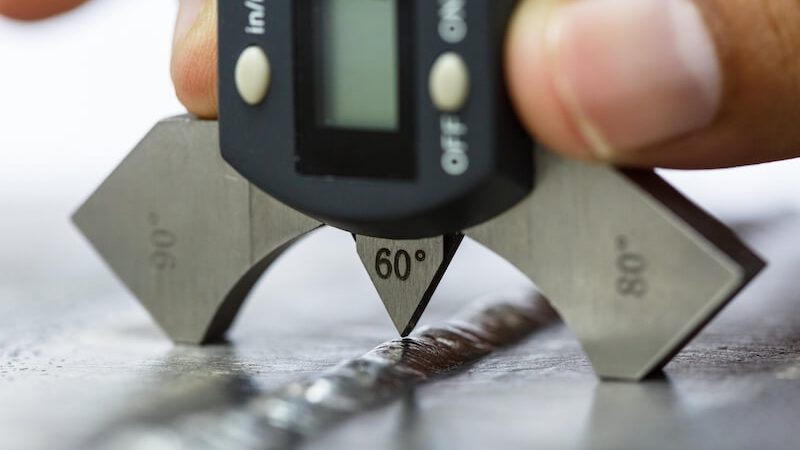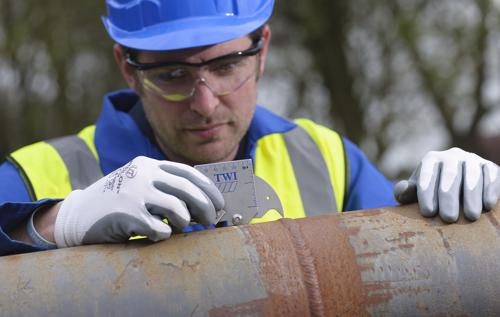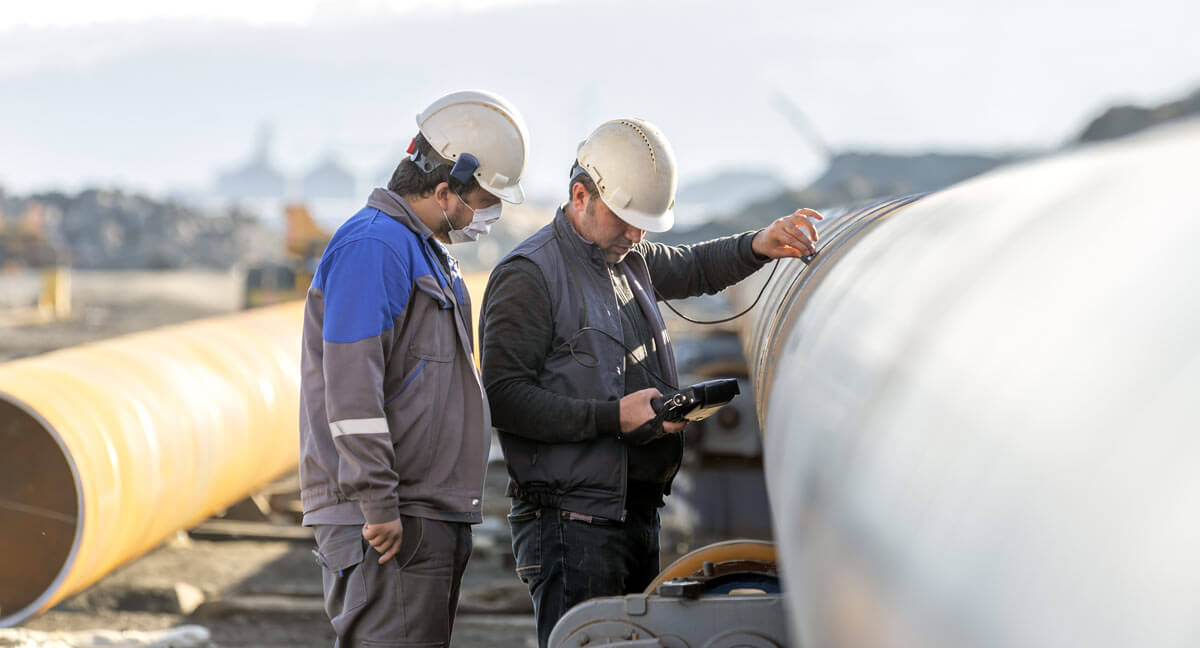Checking Out the Basics of Welding Assessment: An In-depth Examination of Processes, Devices, and the Importance of Top Quality Control in Welding Industries
Welding evaluation functions as a cornerstone in the upkeep of security and architectural integrity across various sectors. By examining the crucial processes and tools utilized in these evaluations, one can value the detailed balance between quality control and compliance with recognized standards from companies such as AWS and ANSI. The methods utilized, including non-destructive and aesthetic testing techniques, are crucial in finding imperfections that could endanger the sturdiness of bonded structures. Understanding the ramifications of these methods raises essential questions concerning their efficiency and the future direction of top quality guarantee in welding.
Relevance of Welding Inspection
Welding examination plays a critical function in ensuring the stability and safety of welded structures. It serves as a systematic approach to evaluating weld top quality, recognizing potential flaws, and ensuring conformity with recognized criteria and requirements. The value of welding assessment prolongs past mere adherence to guidelines; it is critical in securing human lives and protecting investments in framework.
Faulty welds can lead to tragic failings, leading to significant economic losses, injury, or death. As a result, strenuous examination procedures are vital to detect concerns such as insufficient penetration, porosity, or cracks before they escalate into vital failings. Additionally, efficient welding inspection adds to the general performance and durability of frameworks, making certain that they can hold up against the conditions for which they were created.
Additionally, the application of welding examination fosters a culture of high quality and responsibility within the welding market. By focusing on evaluation, companies demonstrate their commitment to excellence, thus enhancing their track record and competitiveness in the market. Eventually, welding evaluation is not simply a step-by-step step but an essential element of design honesty and safety assurance, vital for the effective execution of welding projects across various markets.
Key Inspection Processes
A comprehensive method to welding inspection involves numerous essential procedures that are important for guaranteeing weld quality and architectural integrity. The first important process is visual evaluation, which enables assessors to recognize surface flaws such as cracks, porosity, and improper grain look. This method acts as an initial assessment to make certain that the weld satisfies defined requirements.

In addition, harmful screening may be executed on sample welds to analyze their mechanical residential or commercial properties and performance under tension. This process involves influence, fatigue, and tensile testing to verify that the weld can stand up to operational problems.
Lastly, documents and coverage are critical elements of the examination procedure. Preserving precise records of inspections, observations, and examination results aids make certain conformity with sector standards and assists in continual enhancement in welding methods. Jointly, these crucial processes create the foundation of reliable welding inspection and high quality guarantee.
Tools for Weld Examination
Numerous tools are essential for efficient weld analysis, each made to evaluate different elements of weld high quality and pop over to this site efficiency. Amongst one of the most extensively made use of are aesthetic examination tools, including magnifying glasses and borescopes, which enable examiners to recognize surface area problems such as fractures, porosity, and inappropriate fusion.
Additionally, ultrasonic screening (UT) equipment is important for identifying internal flaws. This tool employs high-frequency sound waves to expose gaps within the weld, making sure the stability of the material. Radiographic screening (RT) devices, which use X-rays or gamma rays, likewise give insight into the internal framework of welds, permitting the recognition of gaps or additions.
For accurate dimensions, calipers and evaluates play a considerable duty in making sure and determining weld measurements adherence to specified resistances. Solidity testers review the mechanical residential or commercial properties of the weld, guaranteeing it fulfills performance criteria.

Methods for Evaluating Quality
Exactly how can the top quality of welds be dependably evaluated? A variety of methods are used to examine weld integrity and guarantee adherence to specified standards. Aesthetic assessment is the most fundamental approach, enabling assessors to determine surface issues such as fractures, porosity, or damaging. This non-destructive strategy functions as a first assessment prior to advanced approaches are utilized.
Ultrasonic testing (UT) is another noticeable method that uses high-frequency acoustic waves to identify internal defects within the weld. Houston Welding Inspection. This method offers a comprehensive sight of the weld's integrity without jeopardizing its architectural honesty. Additionally, radiographic testing (RT) utilizes X-rays or gamma rays to reveal internal defects, providing comprehensive insights into weld quality
Magnetic fragment screening (MT) works for finding surface area and near-surface discontinuities in ferromagnetic products, using magnetic fields and colored fragments to highlight flaws. Lastly, dye penetrant testing (PT) can be employed to reveal surface-breaking problems by using a color that seeps right into splits and is ultimately exposed.
Compliance With Market Requirements
Conformity with market standards is essential for ensuring the top quality and security of welded structures. These requirements, established by organizations such as the American Welding Culture (AWS) and the American National Specification Institute (ANSI), provide standards that govern the welding procedure, materials, and examination protocols. Abiding by these criteria not only guarantees the architectural stability of welds however also minimizes dangers connected with failings that might result in catastrophic consequences.

Welding examiners are entrusted with verifying conformity with these criteria throughout the welding process (Houston Welding Inspection). This includes assessing welding treatments, keeping track of welder qualifications, and carrying out detailed assessments of the end product. Non-compliance can result in considerable financial repercussions, task Click This Link hold-ups, and damages to a company's online reputation
Regular training and updates on criteria are essential to keep employees informed and experienced, making sure that all aspects of welding procedures satisfy or exceed governing requirements. Inevitably, dedication to sector criteria serves as a foundation for quality in the welding market, advertising safety and integrity in welded frameworks.

Final Thought
Finally, welding assessment functions as an important element in preserving the safety and honesty of welded structures. Via the execution of essential inspection processes and the application of innovative devices and strategies, potential issues can be determined and attended to effectively. Adherence to sector standards ensures conformity and promotes a society of high quality within the welding market. Ultimately, extensive evaluation methods not only shield human lives yet likewise improve the resilience and efficiency of welded constructions.
Furthermore, the implementation of welding inspection cultivates a culture of top quality and liability within the welding sector. Eventually, welding examination is not just a procedural action but a fundamental part of engineering stability and security guarantee, vital for the effective execution of welding tasks throughout various fields.
An extensive strategy to welding inspection includes numerous crucial procedures that are important for making certain weld high quality and architectural integrity. These criteria, developed by companies such as the American Welding Culture (AWS) and the American National Standards Institute (ANSI), offer standards that regulate the welding procedure, products, and assessment methods.Welding inspectors are tasked with confirming conformity with these requirements throughout the welding procedure.